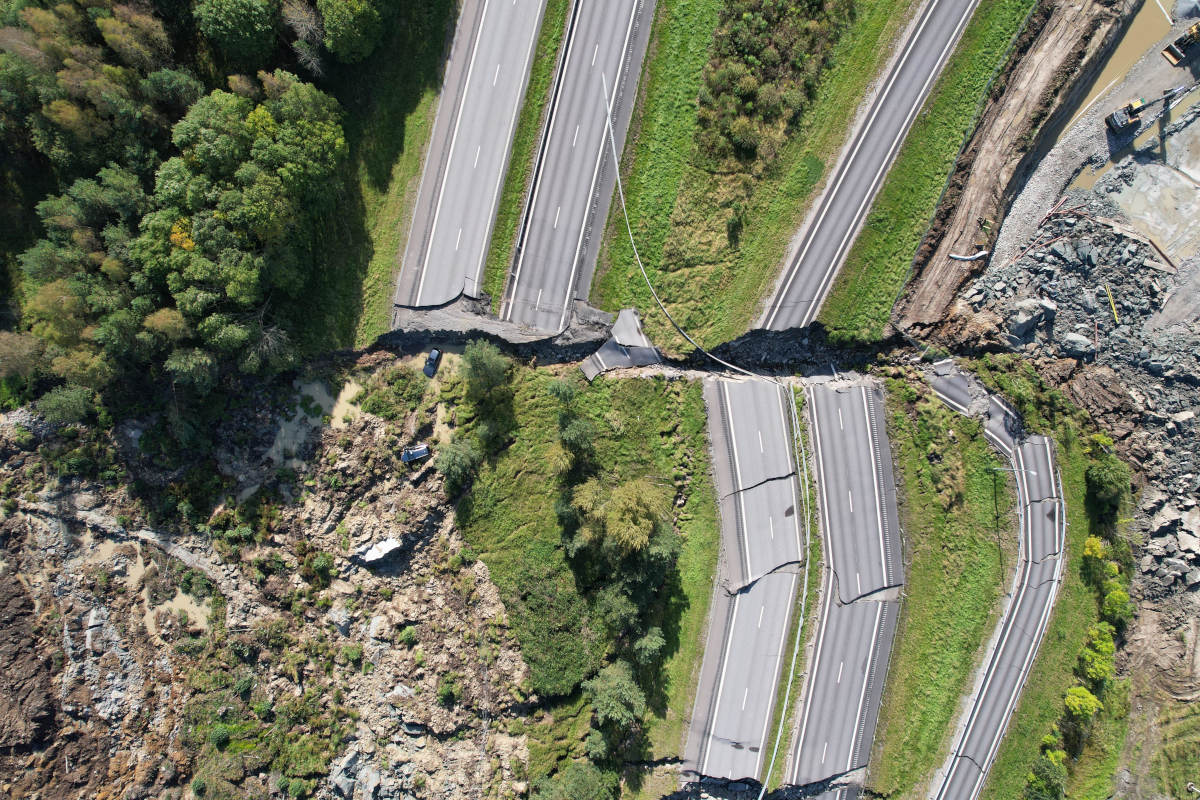E6
The main motorway that connects Gothenburg and Oslo.
01.20am
A massive landslide at a motorway rest stop near Stenungsund is believed to have started at 1.20am, with emergency service SOS Alarm receiving the first call at 01.46am.
700 by 200 metres
An area of around 700 by 200 metres was directly affected by the landslide, with the worst parts destroying an area of around 150 by 100 metres, completely tearing up the motorway.
50 metres
Emergency services believe that the road in some places moved as much as 50 metres.
IN PICTURES:

Three
Three people were taken to hospital with minor injuries. One of them was able to leave hospital on Sunday.
Zero
Fortunately, no one died in the landslide.
Police and rescue services have searched the area with dogs and don’t believe that anyone is still trapped in the mud and debris.
The injury count could have been much higher if the landslide had happened during rush hour, instead of in the early hours of Saturday.
“It’s unbelievably lucky that it happened in the middle of the night,” HannaSofie Pedersen, a climate expert at the Swedish Geotechnical Institute, told the TT news agency.
Ten truck drivers
Around ten truck drivers who had parked their vehicles along a slip road in the area overnight witnessed the landslide. They described waking up to loud noises and seeing the earth move.
One fast-food restaurant
A Burger King restaurant, a fuel station, a car wash and a DIY store are located at the scene. The restaurant, which completely collapsed under the mud, bore the brunt of the damage.
One construction site
Police are investigating whether blasting works at a nearby building site may have caused the landslide. The Aftonbladet newspaper reports that the company owning the site had dumped leftover sand close to the motorway in violation of their permit – a practice that caused a similar landslide at Munkedal in 2006. The company however denies any wrongdoing.
10,000-12,000 vehicles
The number of vehicles that normally pass Stenungsund on the E6 every day.
They will now be rerouted via the E45 and the 650 road, with transport authorities urging drivers to primarily choose the E45 option.
Several months
Sweden’s Transport Administration believes it’s going to take “several months” to repair the road.



 Please whitelist us to continue reading.
Please whitelist us to continue reading.
Member comments